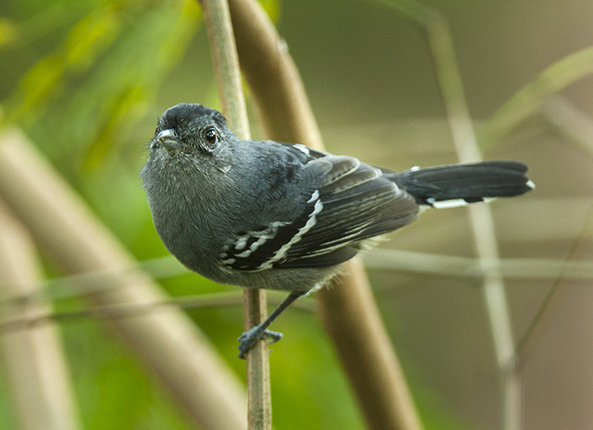Specialized vocal organs give some birds their unique songs
DOI: 10.1063/PT.3.3719
As any experienced birdwatcher will tell you, songbirds have distinguishing chirps and tweets that vary from species to species. Some birds have significant neural control over the sounds they produce, and they learn their songs by mimicking older members of their species. However, a group of birds known as tracheophones, which includes the variable antshrike pictured here, will develop adult song even when raised in isolation. Each tracheophone species has a distinctive structure to its tracheal membrane; there are differences not only in its size but also in its collagen–elastin composition, and those differences produce vocalizations at varying frequencies. Until recently, biologists believed the tracheal membranes were largely responsible for the sounds that tracheophones produce.

FRANCESCO VERONESI

A new study, however, shows that the tracheal membrane is only one of three sound sources that tracheophones use to produce their songs. Biologists Sarah Garcia and Franz Goller at the University of Utah led a team that used a fiber-optic camera to film the tracheae of five tracheophone species. The biologists collaborated with physicist Gabriel Mindlin at the University of Buenos Aires to analyze and model their data. The birds’ songs, it turned out, emanated not only from their tracheal membranes but also from two pairs of structures called labia that line the top of the bronchial tubes.
Tracheophones therefore have the largest number of vocal sound sources of any known animal, and tracheophone vocalizations differ from species to species due to differences in both the tracheal and bronchial structures. The findings provide new evidence for the theory that two evolutionary paths account for vocal diversity in birds: one in which birds evolved complex neural control over their vocal organs, and one in which physiological changes to the vocal organs produced a species’ characteristic song. (S. M. Garcia, C. Kopuchian, G. B. Mindlin, M. J. Fuxjager, P. L. Tubaro, F. Goller, Curr. Biol. 27, 2677, 2017, doi:10.1016/j.cub.2017.07.059
